Disinfect mask: The best methods depending on the mask type
Face masks are currently a controversial topic. Research results show that the protective effect or effectiveness of face masks against the corona virus is insufficient because they cannot filter 100 percent of the virus particles from the air. But although self-protection is not guaranteed, more and more people are wearing masks to at least reduce the risk of infecting another person. In many countries, wearing a protective mask in public is already mandatory in order to reduce the likelihood of transmission of the corona virus at the population level. The mask must be cleaned after each wear. Below we explain whether and how to disinfect a mask.
Disinfect the surgical mask

Surgical masks, still known as mouth and nose protection (MNS), are currently in short supply all over the world. It used to be the case that an operating mask should be changed every two hours or as soon as it is moistened. Now doctors say that disposable masks from the same wearer can be reused as long as they have not been worn for longer than 4 to 6 hours in places with high risk of infection like hospitals.
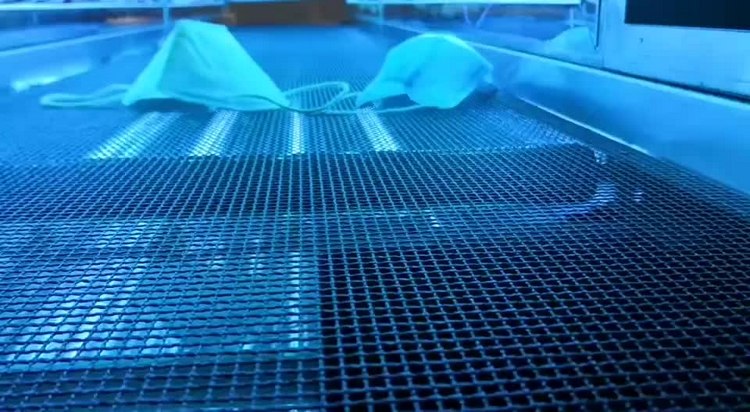
In a Facebook post, Chen Wi-po, a Taipei-based urologist, said that 30 minutes of radiation with UV-C lamp on each side of the face mask used will be sufficient to properly sterilize it. For example, hospitals and subways in China and Moscow are disinfected with UV light. Incidentally, the sale of UV-C lamps online has skyrocketed since the beginning of the corona crisis.

Huang Ching-tai, head of the infectious diseases department at Chang Gung Memorial Hospital in Linkou, also said that the mask can also be used on both sides alcohol spray can to disinfect them. However, the mask must be dry before wearing.

Professor Klaus-Dieter Zastrow from the Hygiene Institute Berlin explained the picture that the mask in the oven disinfect can. Simply preheat the oven to 80 ° C and let the mask dry for 30 minutes. You can also use this temperature with a Iron to reach. 1 point in the ironing symbol stands for “Do not iron hot”. Here the iron heats up between 80 and 105 degrees Celsius. It is particularly important that the material is not damaged when heated. If the mask is damaged, it is better to throw it away.
Disinfect the fabric mask
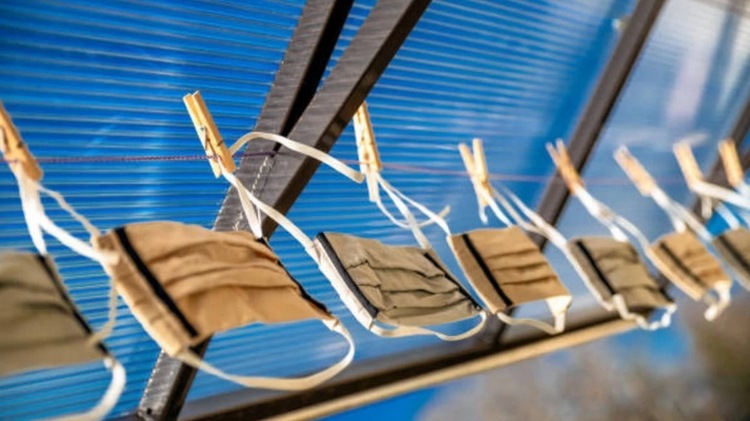
With and without a filter, plain or patterned: simple fabric masks are now increasingly used in everyday life. They are ideal for private use as fabric barriers. Even sewn respirators can in the washing machine getting washed. To really kill viruses, washing temperatures of 60 degrees are required. If you want, you can iron the mask afterwards.
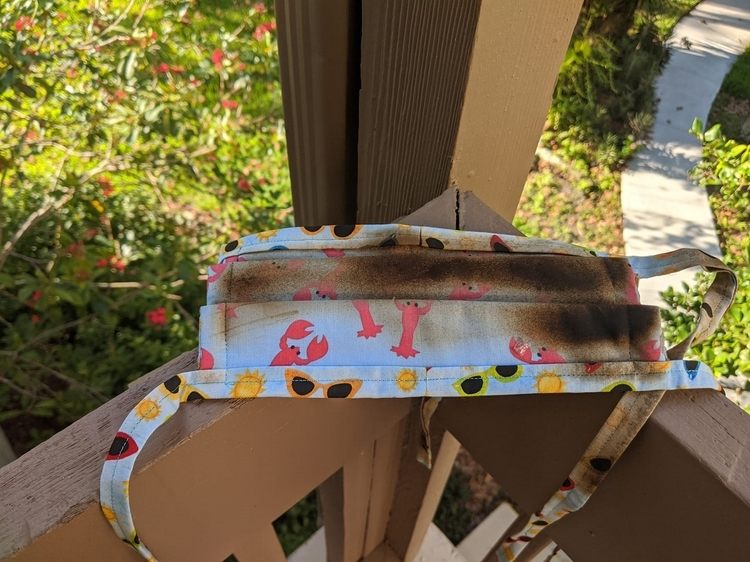
Attention: Face masks ignite in the microwave! Social media users share images of burned face masks to warn of the microwave hazard after viral posts recommended placing the fabric masks in plastic bags and disinfecting them in the microwave for 2 to 3 minutes.
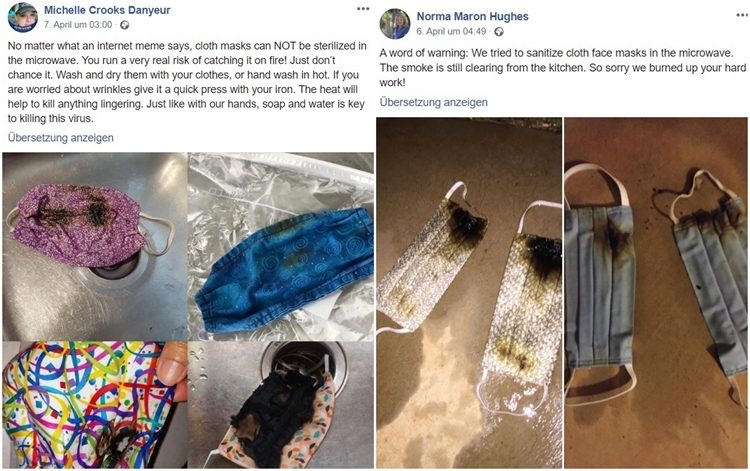
Taiwan's Food and Drug Administration has also recently proposed a fairly novel solution for surgical mask reuse. It is recommended to cook the mask in a rice cooker without water for 3 minutes. But Dr. Frankie Wood-Black, director of engineering and physics at Northern Oklahoma College, also believes this method is potentially dangerous.

Disinfect the N95 / FFP3 mask

The abbreviation ffp3 stands for the highest safety standard of a respiratory mask and means 99% filtration rate of airborne particles up to 0.6 μm. Most FFP3 masks have a valve.
N95 masks are usually intended for single use. 3M, a well-known manufacturer of N95 masks, performed internal tests on various sterilization strategies and does not support any of them. However, according to the CDC, in times of scarcity, their reuse must also be viewed as a crisis capacity strategy to ensure continuous availability. Based on the limited research available, germicidal UV radiation, vaporized hydrogen peroxide and moist heat have proven to be the most promising potential methods for decontaminating FFRs in hospitals. On their website they have summarized all research relating to the decontamination of FFRs before reuse.
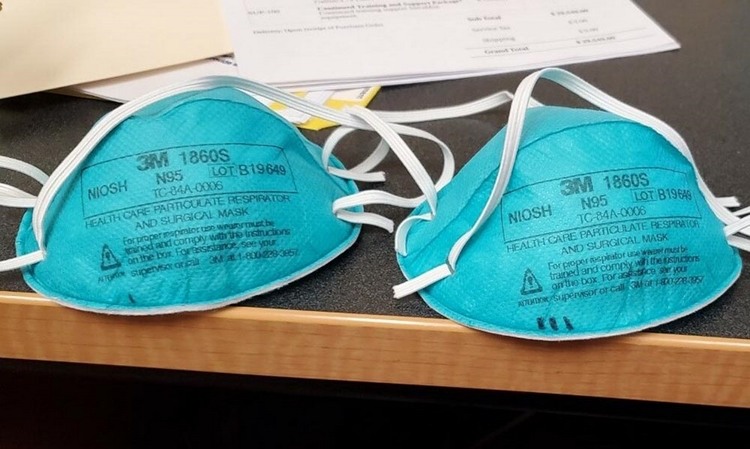
For home use, there is no definitive best practice for disinfecting and reusing N95. The CDC reports that prolonged use of the N95 mask can be safe for up to 8 hours and encourages each user to review each manufacturer's recommendations before following this strategy. It is important that the filtration capacity and the fit of the mask are not affected.
The frequency with which a mask can be safely reused depends on several factors, including whether the user may have been exposed to the corona virus, how it was stored, and whether the mask was dirty. Assuming that the outside of the mask is not contaminated and there is minimal to no viral contamination, the CDC suggests that masks can be hung to dry between uses or stored in a breathable container. The following strategy has been proposed by several organizations based on the fact that coronaviruses lose their viability significantly after 72 hours. There are various online videos on how to correctly put on and take off the mask to minimize contact with the front. Here's a good example:
(youtube https://www.youtube.com/watch?v=EhxpJFDHAeI)
Disinfect the post mask: The best methods depending on the mask type appeared first on Deavita.com | Living ideas, design, hairstyles, make-up, lifestyle, health and beauty tips.





















